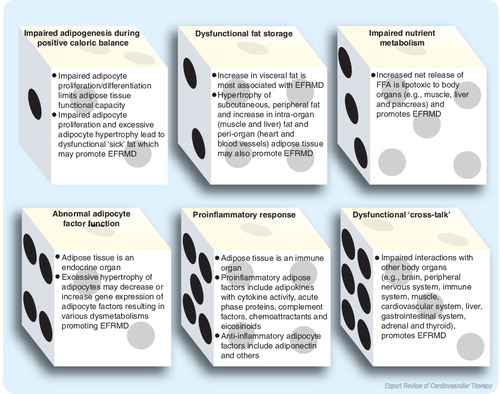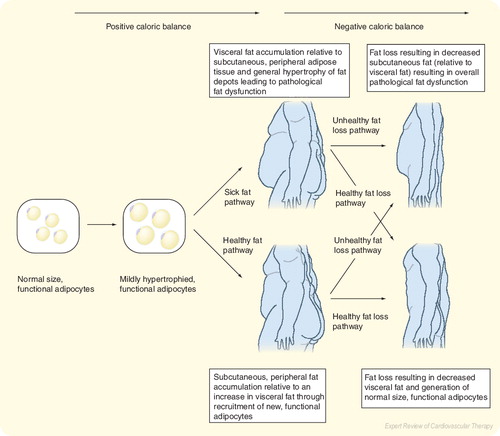Figures & data
Table 1. Select comparisons of subcutaneous, peripheral fat versus visceral fat functions* Citation[18,19,223–230].
Table 2. Adiposopathy interventions and their effects upon select adipocyte factors that may contribute to diabetes mellitus Citation[3].
Table 3. Adiposopathy interventions and their effects upon select adipocyte factors that may contribute to hypertension Citation[3].
Table 4. Adiposopathy interventions and their effects upon select adipocyte factors that may contribute to dyslipidemia Citation[3].

